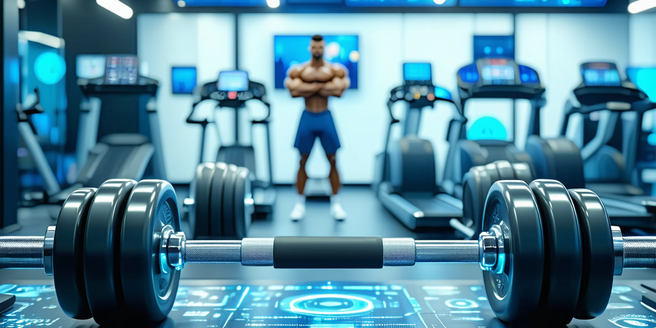Tech-driven Fitness Equipment

The Rise of Smarter Gym Gear
As technology interweaves with fitness, gym equipment has transformed to offer smarter solutions. From treadmills embedded with interactive screens to stationary bikes that adjust resistance automatically, the gym experience is elevated. These devices now provide real-time performance metrics, helping individuals tailor their workouts more effectively than ever before. Beyond mere tracking, some equipment can even suggest workouts and adapt settings based on a user’s progress. Personalization is key; smarter gear can recognize patterns, encouraging users to push their limits safely. This wave of innovation not only boosts motivation but ensures that fitness goals are met with precision. Gym-goers now enter a space where technology fuels their journey, making workouts both efficient and engaging. As the demand for such equipment rises, the line between technology and fitness continues to blur.
How Wearable Tech Revolutionizes Workouts
Wearable technology has redefined how we approach workouts. Gadgets like fitness trackers and smartwatches provide insights into our physical activities, measuring metrics such as heart rate, calories burned, and distance. This real-time feedback allows for informed decisions, maximizing workout efficiency. Wearables promote accountability, motivating users through reminders and progress charts. Advanced models even integrate GPS for outdoor running, offering route mapping and elevation stats. With personalized coaching and recovery tips, wearables ensure optimal performance while preventing injuries. Integrated with smartphones, they offer seamless tracking and data sharing. As this technology evolves, the ability to monitor and improve one’s health on the go becomes a reality. This continuous stream of data empowers individuals to tailor their fitness routines, pushing the boundaries of what can be achieved in physical training.
Innovations in Home Fitness Machines
Home fitness machines have seen remarkable innovations, transforming living rooms into efficient workout zones. The advent of foldable designs and compact equipment allows users to maximize space. Interactive screens offering live classes bring the gym home, providing motivation and guidance. Equipment now boasts smart capabilities, such as tracking progress and suggesting personalized workouts. Integration with apps ensures that data from every workout session can be analyzed and stored. Machines adapt through AI, adjusting resistance or speed to meet fitness levels. These advancements cater to the demand for convenient, customized fitness experiences without the need for a gym membership. As technology continues to evolve, home fitness machines will become ever more advanced, ensuring that users can perform diverse exercises with ease and efficiency, making at-home fitness both practical and engaging for all.
The Role of AI in Personalized Training
AI is revolutionizing personalized training by offering tailored workouts that adapt to individual progress and needs. As users engage in fitness routines, AI analyzes their performance data, recommending changes in intensity and focus areas. With machine learning, AI can predict plateaus and suggest techniques to overcome them, ensuring continuous improvement. AI-driven platforms provide virtual coaching, offering motivational cues and corrective feedback in real-time. These intelligent systems can adapt to different fitness goals, whether to build endurance, strength, or flexibility. Integration with wearable devices enhances data accuracy, allowing AI to recommend optimal recovery periods and nutrition tips. By minimizing guesswork, AI ensures that each workout session is productive and aligned with personal objectives. As technology advances, AI is set to become an invaluable partner in individual fitness journeys, optimizing training plans with precision.
Future Trends in Fitness Technology
The future of fitness technology promises transformative trends that will redefine exercise landscapes. Virtual reality (VR) is set to immerse users in interactive workout environments, while augmented reality (AR) will overlay informational graphics during exercises. AI-driven nutrition apps will tailor dietary recommendations based on activity levels and health goals, making wellness holistic. The integration of advanced sensors in apparel and footwear will provide comprehensive biomechanical data, enhancing performance analysis. Moreover, cloud-based platforms will enable seamless workout data sharing, promoting collaborative fitness experiences. As telehealth becomes commonplace, remote training sessions with professional trainers will gain traction. Sustainability will also play a role, with eco-friendly materials and energy-efficient equipment gaining popularity. These trends, fueled by user-centric innovations, ensure that fitness technology continues to empower individuals towards healthier lifestyles, pushing boundaries and creating new possibilities in the domain of wellness.